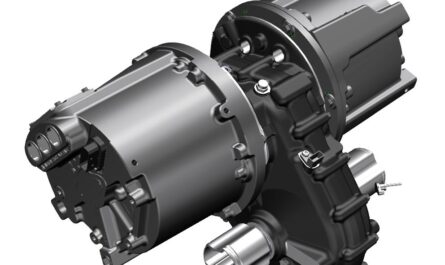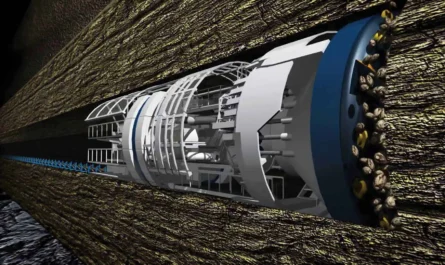Artificial Intelligence (AI) Robots is transforming how humans and machines interact. By powering increasingly intelligent robots, AI is opening up new possibilities for automation and assistance that go far beyond what previous generations could have imagined. From manufacturing to healthcare to everyday tasks, AI robots are poised to significantly change how we work and live.
AI Advances Open the Door for More Sophisticated Robots
Recent breakthroughs in machine learning and deep learning are enabling robots with new levels of autonomy, dexterity, and problem-solving skills. Neural networks allow robots to learn from massive amounts of data and acquire skills in a way inspired by the human brain. State-of-the-art computer vision systems give robots the ability to perceive their environment with ever-greater accuracy. Artificial Intelligence (AI) Robots Advances in natural language processing are allowing robots to communicate with humans in more natural ways. These AI technologies are coming together to make robots smarter and more capable than ever before.
Robots once required precisely programmed instructions for each individual task. But new AI systems empower robots with an internal reasoning ability that allows them to learn new skills and adapt to unfamiliar situations. This gives robots a flexibility that promises to revolutionize how they are used. Instead of being confined to structured, repetitive roles on factory assembly lines, AI robots have the potential to take on a much wider range of complex tasks. Their skills could range from performing precise surgery to deep sea exploration to search and rescue missions in dangerous environments.
Manufacturing Transforming with Collaborative Robots
One area already being transformed by artificial intelligence (AI) robot is manufacturing. Factories worldwide are adopting collaborative robots, or “cobots,” that can work safely alongside human workers thanks to their intelligence and sensing capabilities. Equipped with computer vision, force sensors, and spatial mapping abilities, cobots understand their environment and can perform tasks without endangering nearby humans. This allows for a much closer human-robot collaboration not possible with traditional industrial robots confined behind safety cages.
Cobots take on a variety of mundane and automated manufacturing subtasks. They assist with assembly, material handling, quality control inspections, and more. By augmenting human employees in this way, cobots boost productivity while reducing fatigue and the risk of workplace injuries. They also allow factories to dynamically reallocate labor according to changing production demands. AI even enables some advanced cobots to adapt their instructions over time based on worker preferences and feedback. Forward-thinking manufacturers are using cobots to keep production and jobs in their home countries by supplementing aging workforces.
Healthcare Advancing with Surgical, Diagnostic and Assistance Robots
The promise of AI is also being realized in healthcare applications. Surgical robots enabled by computer vision and precise motion control are enhancing outcomes for minimally invasive procedures. Their small instruments, magnified 3D camera views, and precise endowments exceed the abilities of human hands alone. Some robots can even account for tiny tremors to perform extraordinarily delicate tasks. Advanced diagnostic robots also analyze medical scans, check vital signs, and draw blood withfar greater accuracy, speed and reliability than humans.
Perhaps most significantly, AI care assistant robots are entering homes and medical facilities to help the elderly and those with disabilities maintain independence. Equipped with advanced sensors, these robots can monitor vital signs, dispense medication reminders, detect falls, and alert emergency contacts if needed. Through natural language conversations, robots offer companionship and perform basic home assistance tasks to take some pressure off overburdened caregivers. As AI continues improving, these robots promise to play a growing role in remote patient monitoring, rehabilitation therapies, and more. The integration of AI into healthcare promises longer and higher quality lives for people around the world.
Artificial Intelligence (AI) Robot Adopting household Tasks
Beyond industrial and medical applications, AI is enabling a new generation of household robots for personal assistance and everyday chores. Intelligent robotic vacuum cleaners equipped with computer vision, Lidar mapping, and spatial reasoning automatically clean entire homes while avoiding obstacles. Advanced robot lawn mowers cut grass precisely based on property boundaries defined either manually or through machine learning of the terrain over time. AI garbage sorting robots now recognize different recyclable materials to simplify home waste management.
Other artificial intelligence (AI) robot are assisting with care for children and elderly family members through purpose-designed companions and activity coaches. Some can even perform basic cooking and meal prep through step-by-step instructions. In the longer term, as robotics and machine learning continue progressing, autonomous household robots may take over more complex cooking, cleaning, repairs, errands, and other routine lifestyle tasks. This could help reduce consumer costs of living while freeing up personal time for more rewarding activities. Overall, AI robots promise to become dependable household allies for both basic duties and quality time with family members.
Machine Learning Empowers AI Assistants
Cutting across all of these industries are AI assistant robots powered by sophisticated machine learning. Digital assistants like Alexa, Siri, Google Assistant, and Cortana handle a continually expanding range of natural language queries and commands through deep learning algorithms trained on massive datasets. Their knowledge bases grow richer every day through unsupervised learning from user interactions and feedback. AI robots built upon these technologies gain new conversational, problem-solving, and adaptive skills that feel increasingly natural and intuitive for humans.
Whether helping schedule appointments, translating between languages, controlling smart home devices, or simply answering questions – these digital and robotic AI assistants play an increasingly central role in people’s daily lives. Personalized machine learning even allows them to get better acquainted with individuals over time. Through context, preferences, historical patterns and more, AI assistants can offer an unmatched level of customized service not possible with rigid programming alone. As they grow more knowledgeable and capable through ongoing learning, AI assistants promise to become trusted lifelong allies for work, home and beyond.
AI is empowering a new generation of intelligent robots capable of collaboration, adaptability and natural interaction with humans at an unprecedented scale. Whether assisting in hospitals, augmenting workforces, or becoming household allies, AI robots are poised to significantly enhance productivity while improving quality of life for people worldwide. Of course, these developments also involve careful consideration and oversight regarding jobs, ethics, privacy, and more. Overall, through continued responsible advancement, artificial intelligence (AI) robot promises to usher in an era where humans and intelligent machines work together in mutually beneficial partnership. The capabilities of these systems have only begun to be unlocked, with even more impactful and life-changing innovations still ahead.
*Note:
1. Source: Coherent Market Insights, Public sources, Desk research
2. We have leveraged AI tools to mine information and compile it




